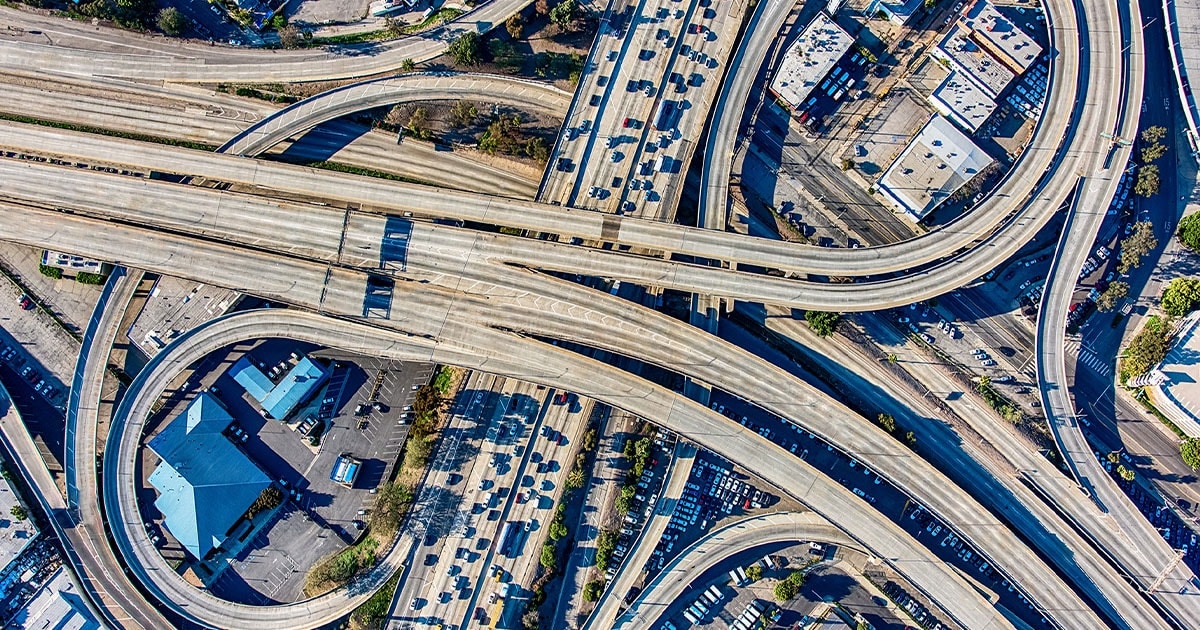
It’s impossible to say what the world would be like now if the coronavirus pandemic hadn’t happened, but it has, and it continues to have a dramatic impact on our lives. This affects the world of mobility, transport and location tech more than most other industries. So much so, it’s challenging how we think about its future.
Given what we know from planned events, company announcements and developments over the past year, there are a few things we should expect to see in the world of mobility in the coming year.
The return of in-person trade shows
With vaccination and travel bans lifted around the world, we’re now able to travel further afield and in-person events are starting to take place again. With that, we should expect more presence at headline events such as CES and Mobile World Congress.
Typically, these aren’t the most important events for the automotive sector. However, as vehicles get more advanced and play host to more technologies, they become more relevant at tech events. CES is expecting to host the largest number of automotive exhibitors in its history. If ever you needed evidence that we now see our cars more as pieces of tech rather than mechanical transport tools, this is it.
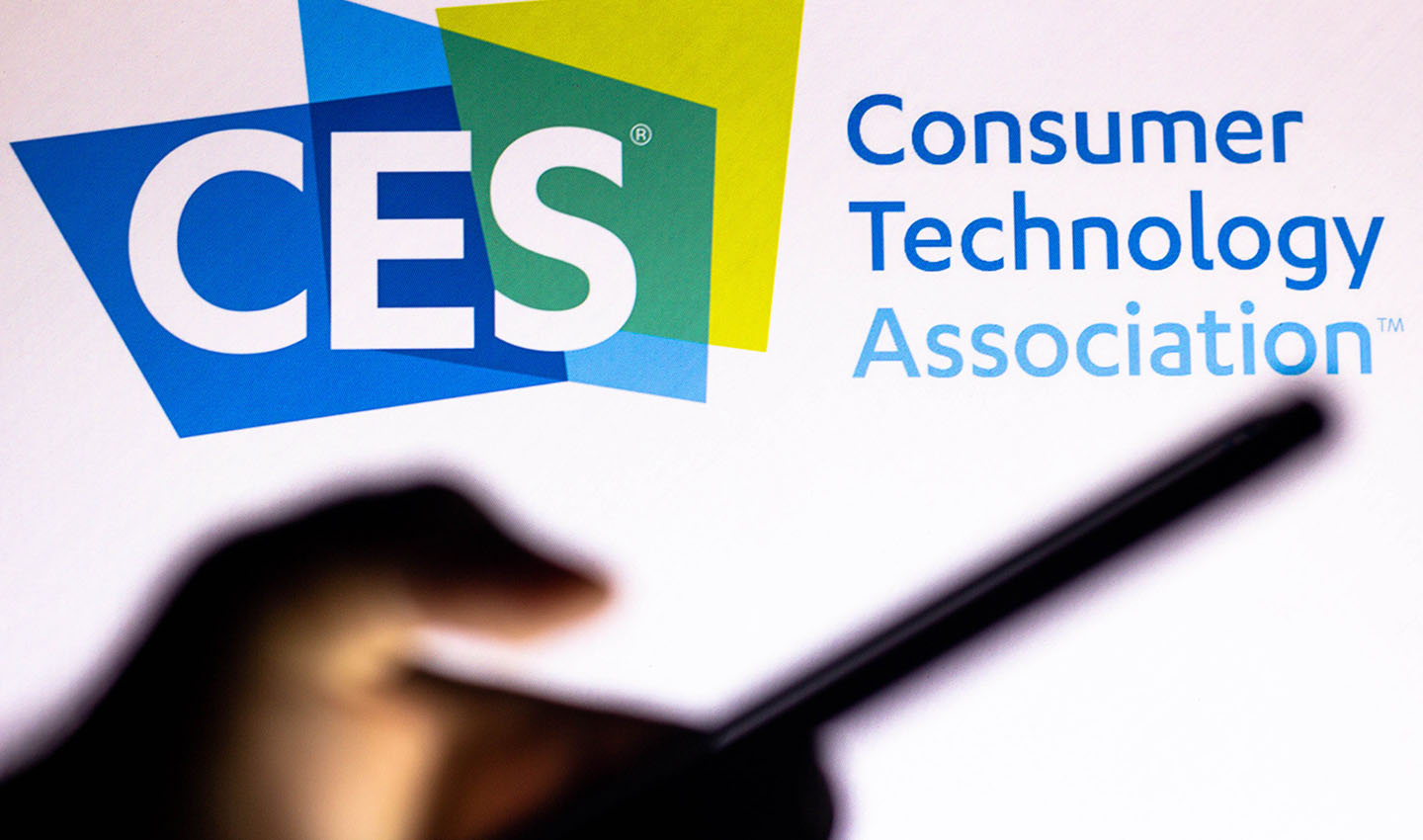
CES is going to play host to the world’s leading tech brands, and the largest number of automotive exhibitors in its history.
As with previous years, expect to see electric vehicles on display at every opportunity, battery power being the norm. Organizers also tell us that things like the digital cockpit (more on that later) and autonomy will be high on the agenda.
A few years ago, EVs still felt a bit novel, but perhaps the biggest expectation of CES 2022, is that seeing electric cars should all start to feel a bit more normal.
With more auto exhibitors than ever, expect some unexpected announcements too. The event is no stranger to headline grabbing reveals that no one saw coming, remember when Sony unveiled its Vision-S electric concept car? A good tradeshow is never without surprise.
Update, 30 December 2021: Since writing and publishing this article a number of high-profile names in the tech industry have decided to pull out of CES and to not proceed with their in-person presence at the show. The overarching motivation behind their decisions is to protect the health of their employees and anyone they would have met at the show. Many are pivoting to a virtual event. Even so, the event's organizers are steadfast in their claim the event will go ahead.
Big EV announcements and deliveries
On the theme of announcements, there are a host of new EVs that we should expect to hear more about next year. While EV headlines in recent years have been taken by new startup brands, it seems that 2022 will be the year that traditional automakers enter the space in a big way. This is undoubtedly the main theme of the past 12 months.
Unveiled in March 2021, Volvo’s C40 Recharge is slated for deliveries to begin at the end of the year. This is alongside the company’s XC40 Recharge that will start hitting the road in January next year.
Popular German marques like BMW and Audi are also further dipping into the EV waters. Audi is expected to bring even more vehicles to its e-tron lineup, including an A6, Q5 and Sportback. BMW’s high-end electric i7 is also likely to steal many a headline as it goes into competition with the likes of the Mercedes-Benz EQS and Tesla Model S for the high-end electric car market.
Over in the U.S., Ford has been laying down its electric intention too, recently stating that it wants to be the world’s second largest electric vehicle maker in two years.
For a company that has one notable EV in its lineup right now, that’s quite a statement, but the company has a trump card: the electric F150 Lightning pickup truck. While there are other electric trucks coming from the likes of Rivian, Lordstown and Tesla, none carry a name with the gravitas of the F150.
According to Ford Authority, the Blue Oval sold nearly 800,000 F150 trucks in 2020 in the U.S. alone. Figures from car industry analysts Edmunds show Ford’s F-Series of vehicles is the most popular vehicle in most of the US. The popularity of the F150 cannot be underestimated, and an electric version is surely going to make waves.
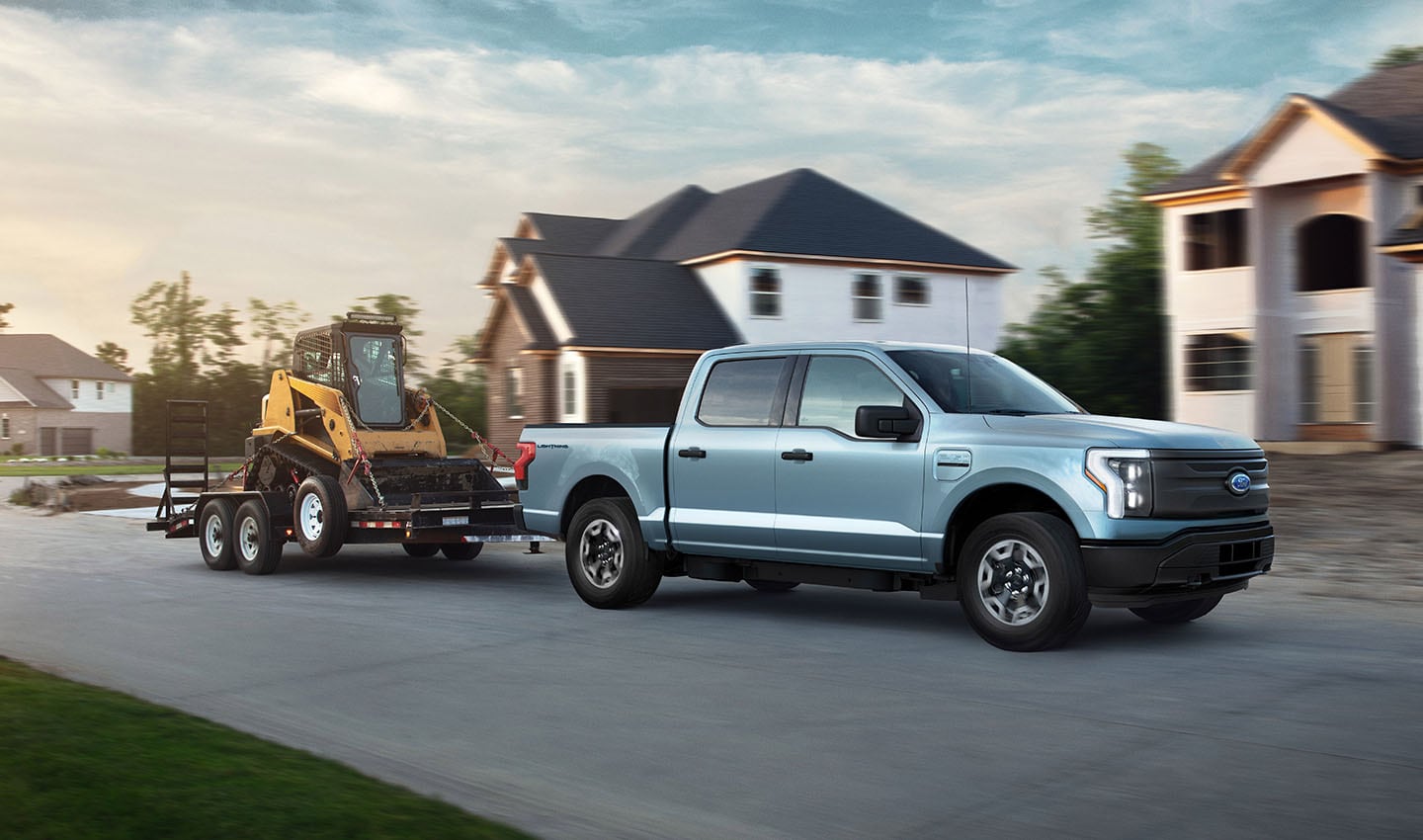
The Ford F150 Lightning is aiming to be an all-electric truck for the hardworking masses. Of all the EVs available today, it has the biggest of names to live up to.
There are a lot of very exciting cars coming from upstart brands right now as well. Luxury-oriented brand Lucid and off-road adventure focused brand Rivian are two of the most talked about marques at the moment.
Lucid CEO Peter Rawlinson had said that deliveries of the first Air models would begin this year, but coronavirus induced supply chain issues thwarted that. So perhaps 2022 will be the year we see them in the wild.
As for Rivian, we’ve seen plenty of videos of its vehicles in testing, many members of the press have also had the opportunity to test drive the electric pickups too. Employees, the first to take delivery, have been getting their electric trucks over the past few months, customer deliveries will follow. Expect 2022 to be the year we start seeing these vehicles on the road in a bigger way.
The headline grabbing moment for Rivian though, was when it IPO’d in November. Within a day of going public, the company’s share price shot over $100 giving it a market valuation of over $100 billion, CNBC reported at the time. It made the upstart automaker, that’s not delivered a customer vehicle, more valuable than Ford and GM.
But there’s one other brand that we need to start paying more attention to: Fisker Inc.
Over the past year, Fisker Inc. has been teasing us with imagery of its upcoming sustainable SUV the Ocean. Last month, the company finally unveiled it to the public at the L.A. Auto Show, and now we have a near perfect idea of what it’s going to look like, its top line specifications and its pricing.
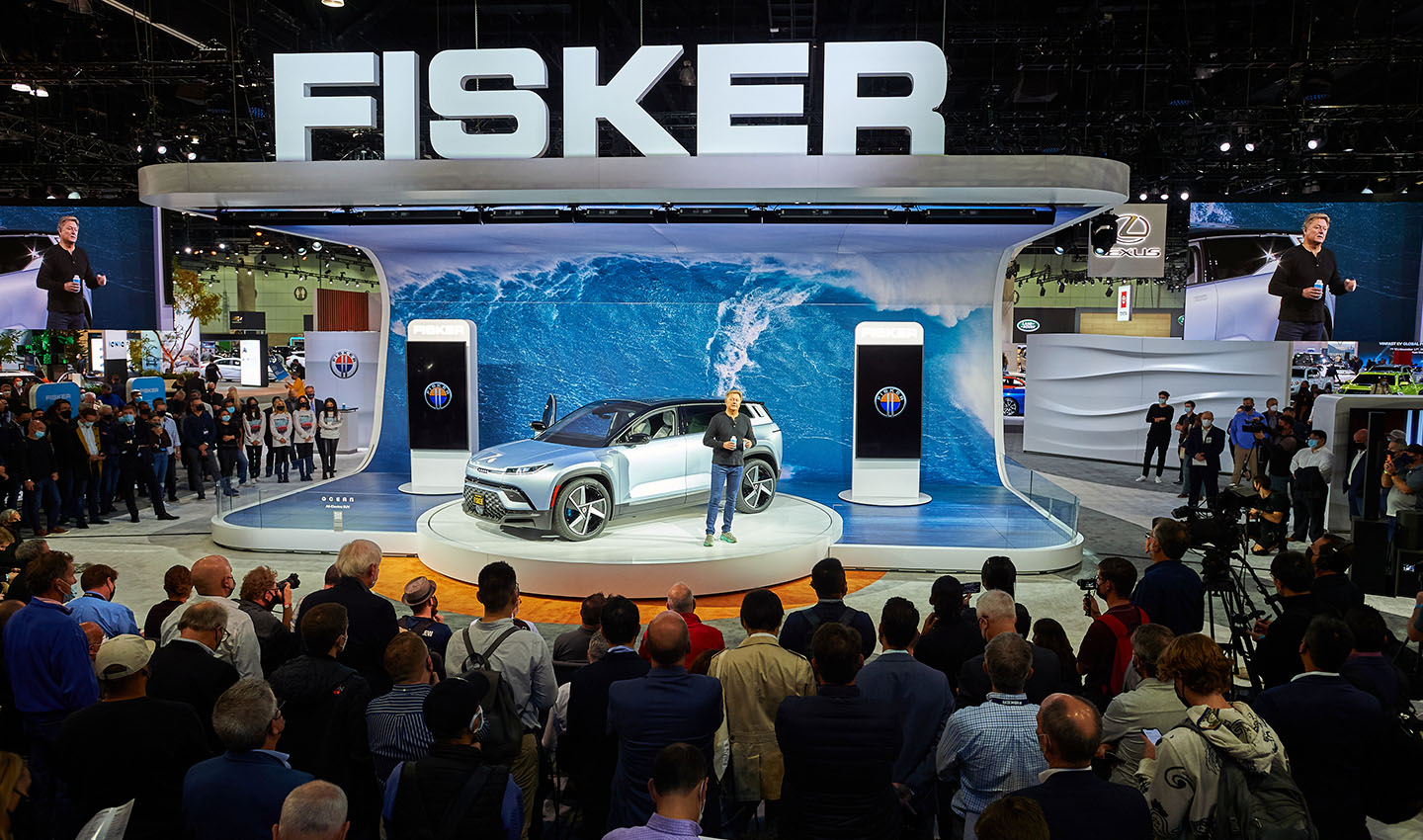
Fisker Inc. CEO Henrik Fisker unveiling the production-intent version of the company’s all-electric, sustainability focused SUV, the Ocean, at the L.A. Auto Show.
Over the next year you should expect to see a lot more about Fisker and its Ocean as the company starts to ramp up production for 2023. Fisker will be at CES showing off its one-of-a-kind rotating center stack display.
Speaking of digital in-vehicle screens brings me neatly on to my next trend to expect.
The digital cockpit
Now that cars are getting super high tech, carmakers are turning their attention to the in-vehicle experience.
Our expectations of cars aren’t what they used to be. We expect new features over the vehicle’s life, we expect personalization, intuitive interfaces, eye-catching graphics and hyper-modern user experiences. We also want to be able to watch a movie when we’re parked up charging. We expect our cars to be more like a laptop or phone.
Those demands and expectations are forcing carmakers to rethink how in-car experiences should be designed, how we should interact with vehicle interfaces and what purpose the digital cockpit serves.
In November, TomTom launched its digital cockpit platform. You can read more about that here, but in short, it’s a software development tool that’s designed to make developing digital cockpits; faster and easier, while lowering costs and improving the overall user experience.
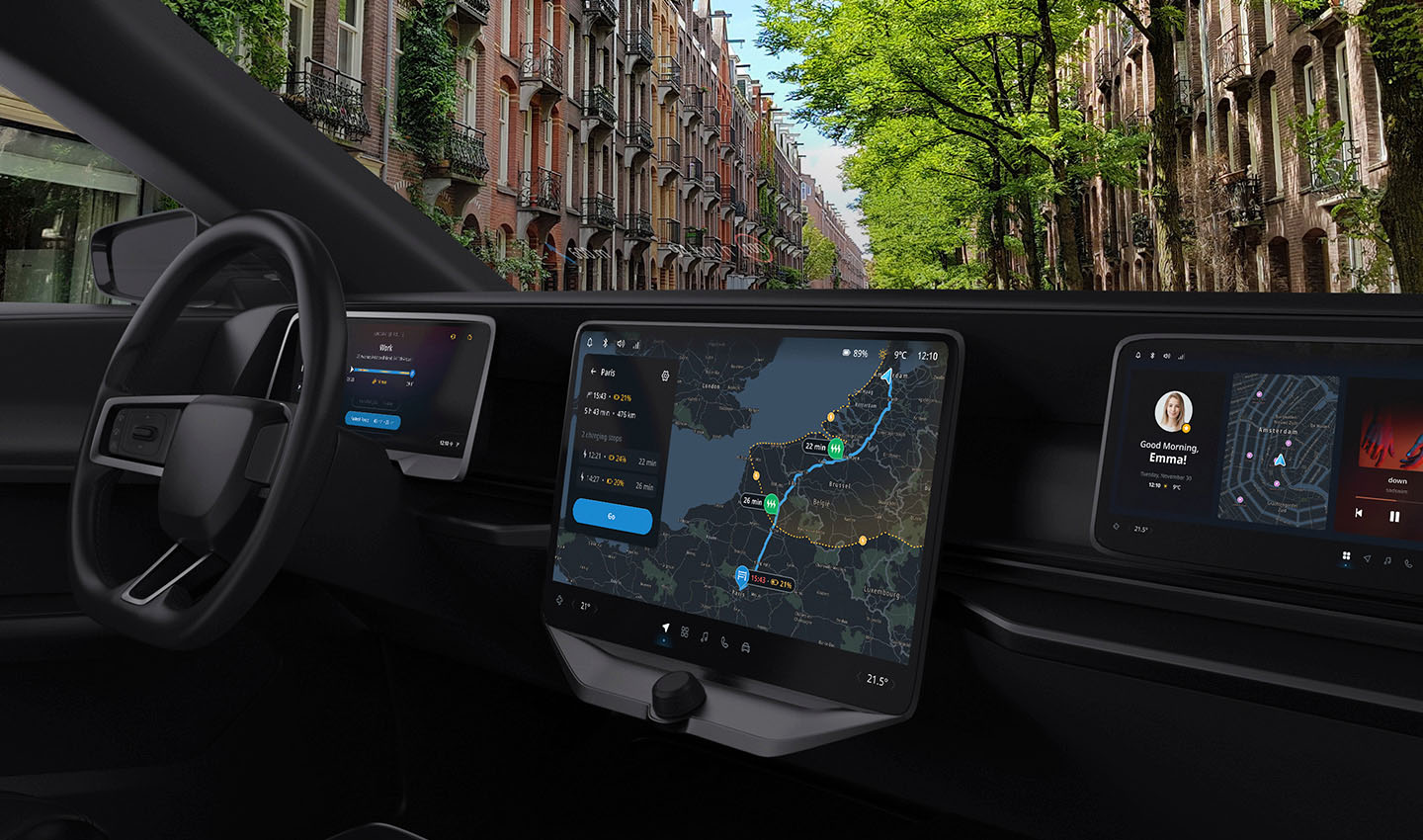
The digital cockpit is going to be big in 2022. Dare I say that next year will be the year of the digital cockpit?
While the technology is important, what we should also note is the timing. Last year at CES, digital cockpits were a core feature of what was on display from automakers. There is significant and growing demand in the industry for development tools that help carmakers make their in-vehicle experience modern, adaptable and contemporary.
We want our cars to be more like our phones these days, and for that to happen we need to change the decades-old development processes of the car industry. We need to empower carmakers by helping them install modern features and technology in their vehicles. We need a platform that can be updated easily over the life of the vehicle.
As consumer demands increase, be sure to expect more extravagant, engaging and exciting digital cockpits from carmakers. Over the coming year, we’re going to hear a lot more about “digital cockpits” and expect to see more radical design ideas like Fisker’s rotating center stack screen.
Safety legislation in full effect
Next year is going to see Intelligent Speed Assistance (ISA) regulations come into full effect too.
We’ve been making quite a lot of noise about ISA at TomTom, not just because digital maps are vital to being ISA compliant, but because the speed assistance technology has the power to make our roads dramatically safer.
Essentially, ISA is a legislation which is going to require all new vehicle types to feature speed limiting technology. This tech is built on cameras that read road signs and maps that inform the system of implicit speed limits and in situations where signage is obscured or not present.
The laws were published in EU documentation in November and will come into full effect from July 6, 2022 for new vehicles, and in 2024 for all vehicles. Read more about that here.
Navigation and location tech outside of the car
When the coronavirus pandemic hit, we were forced to adapt to working from home, lockdowns and travel restrictions. As TomTom’s Traffic Index showed in 2020, this had a dramatic impact on the way we traveled.
Over the past year, as lockdowns began to lift, our cities continued to change. We’ll find more about how cities fared over the past year with the upcoming traffic index, but there are a few things we know now.
We’re still working from home most of the time, meaning that we were much more available to take delivery of packages and deliveries. With these daily dynamics now common place, we spend more time and money shopping online. Ecommerce in this area has exploded and our city streets are now awash with startup businesses that take care of last mile deliveries, on-demand grocery deliveries and food ordering services.
For these platforms to work smoothly and efficiently, they need to be able to help their riders or delivery drivers navigate across cities with ease. Location data is phenomenally important here.
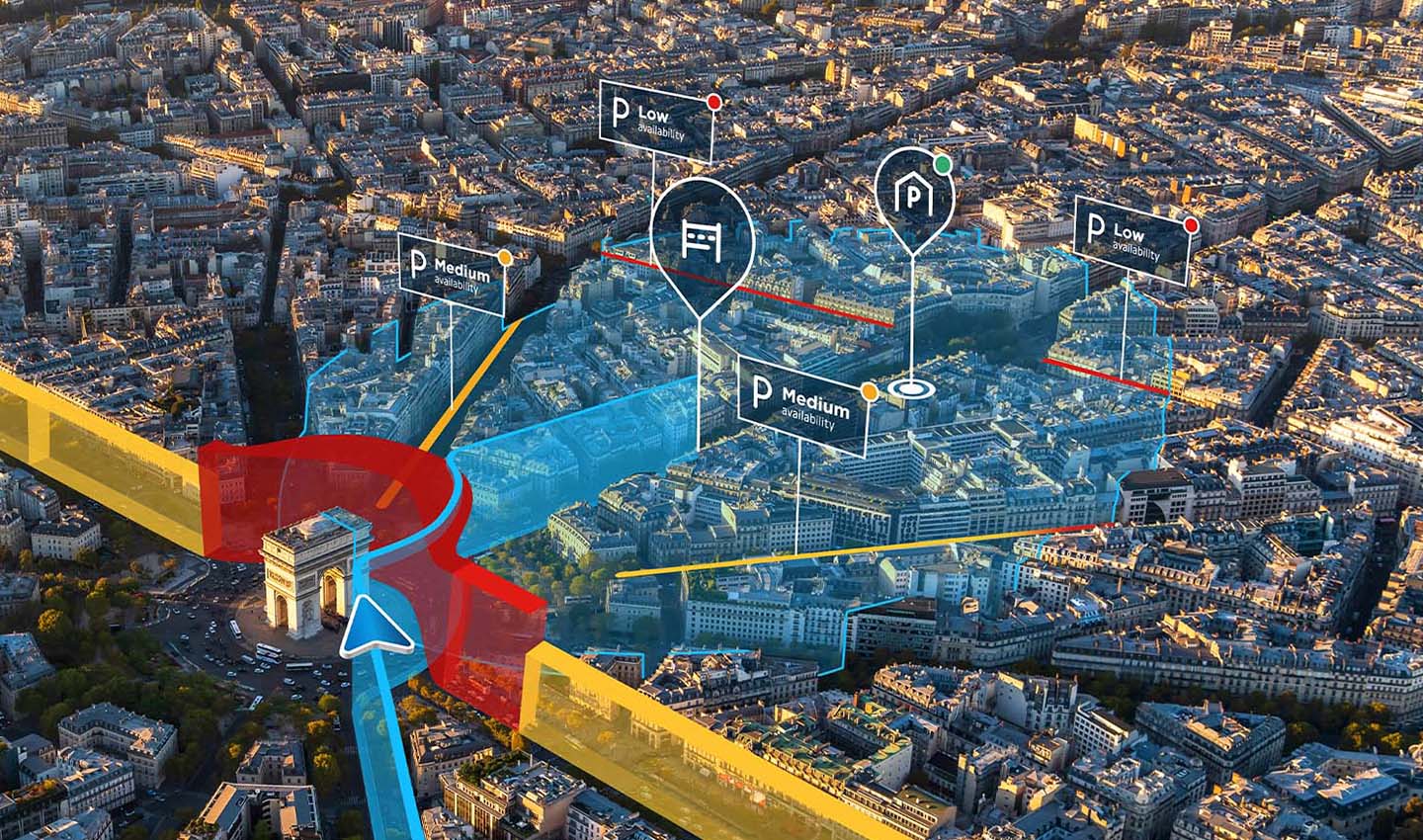
The future isn’t just about cars getting from A to B, it’s about being able to navigation from A to B to C and beyond, with ease.
It’s not just about being able to give a rider the quickest route to their destination so food arrives hot and fresh, it’s also about knowing where restaurants and houses are, knowing where entrances are, knowing what streets are open, knowing where traffic jams are and knowing how long it takes to get from A to B.
The challenge is that cities are constantly changing, roads are closing, restaurants move locations and open new branches and traffic flows vary throughout the day. To navigate through this fast-paced world takes a lot of data and a lot of knowledge.
Analysts expect our online shopping habits to continue long after the economy has recovered from Covid-19, which is only going to place more emphasis on location data and tech outside of the car.
We’re also seeing startups use location tech and data in new and novel ways. Take insurance company Loop for example, it’s using location data and map information to understand where and how a person drives. From this, the company is able to understand how much risk a driver takes on their daily drives and provide them with an insurance premium that reflects how and where they drive.
Technology like Loop’s has the power to challenge a decades old industry and help it evolve from a demographic-based model, to one of fairness and accuracy. In the coming year, we should expect to see more businesses meld location data, which has typically been the preserve of the automobile, into new business models, ones that support accessibility, fairness and a better future.
The year ahead
It feels very much like the industry has been gathering momentum over the past few years. Automotive brands are expanding into technology and software. Location data is being used in applications beyond helping people get from A to B. The word mobility is now in the common lexicon. The definition of mobility tech is growing as technologies traditionally used in one part of the industry bleed into others.
We’ve had hints of the future dangled in front of us as electric vehicle startups grow and enter mainstream consciousness. The past year proved that EVs are no longer a pipe dream, they are coming thick and fast. And the traditional automakers which were said to be decades behind the market leaders are catching up quickly.
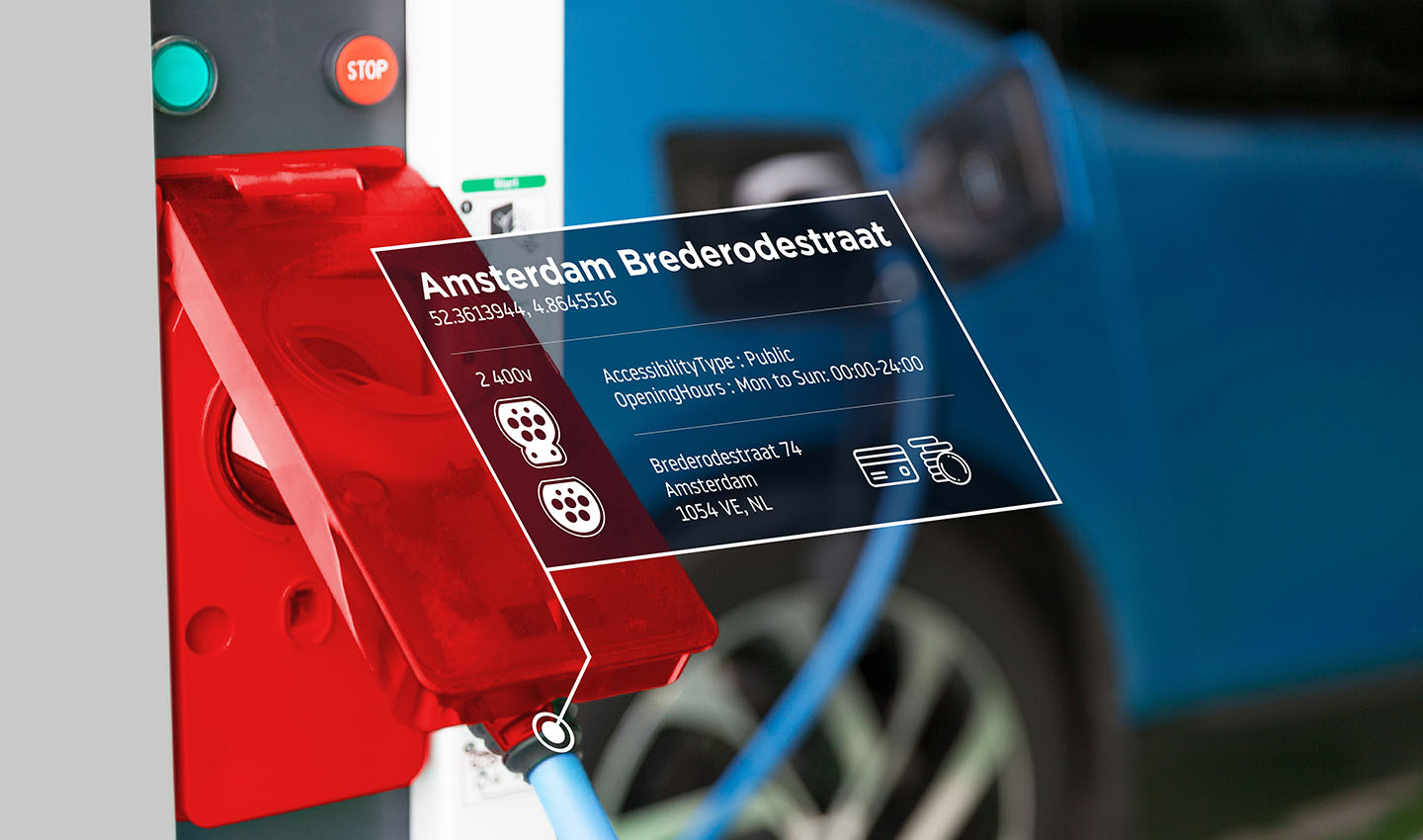
The future is electric. As we get closer to CO2 reduction targets the number of EVs available is going up. Next year will be crucial for EV adoption as a number of key market players put their offerings on the road.
But we must think beyond EVs. While electrification might be a huge part of how we get around, it’s not the only component of our transport future. The digital cockpit is going to bring our digital lives into the car in new and exciting ways. Location technologies that were traditionally used in the automotive field are finding new applications to challenge decades old industries.
Perhaps that’s the one thing we should expect more of in the future; a form of recombinant innovation where technologies and ideas from different worlds come together to form something new, hopefully for the better. With that we can be sure mobility tech will broaden to encompass everything that helps us and businesses navigate through – and find meaning in – the world.
Update, 30 December, 2021: Since this article was published, the Omicron Covid-19 variant has spread at a rapid rate. Travel restrictions and isolation measures are being reinstated around the world and many nations have implemented local measures and lockdowns to slow the spread of the variant. With that, many big names in the tech industry will no longer attend CES in person. CES' last update said some 2,000 exhibitors would still be attending physically, the event is also taking a number of measures to ensure it is as safe as possible.
As of 30 December, 2021, TomTom has decided not to attend CES in person. In an official statement, the company says, "Considering the current situation with the COVID-19 virus, TomTom has made the decision not to proceed with our in-person attendance at CES 2022. The health and safety of our customers, partners, employees and guests is our highest priority. We will have a virtual presence, so industry participants can interact with our experts on our latest innovations in the automotive and enterprise spaces."
October 21, 2022, 06:30 UTC.This article has been updated to reflect the new name of TomTom’s in-vehicle infotainment platform. It is now called TomTom Digital Cockpit.People also read
)
Say hello to TomTom Digital Cockpit, the new way to build digital cockpits
)
Intelligent Speed Assistance legislation is here
)
What is a digital cockpit? The future of in-vehicle infotainment
* Required field. By submitting your contact details to TomTom, you agree that we can contact you about marketing offers, newsletters, or to invite you to webinars and events. We could further personalize the content that you receive via cookies. You can unsubscribe at any time by the link included in our emails. Review our privacy policy. You can also browse our newsletter archive here.
)